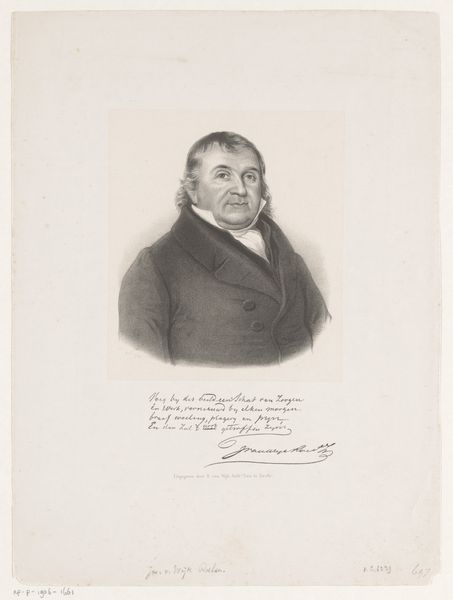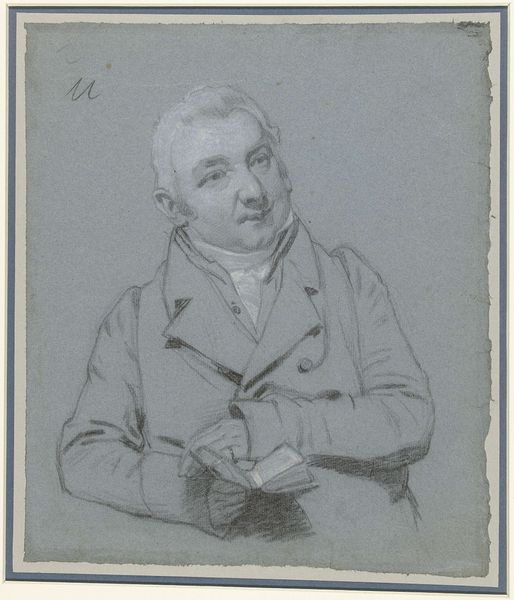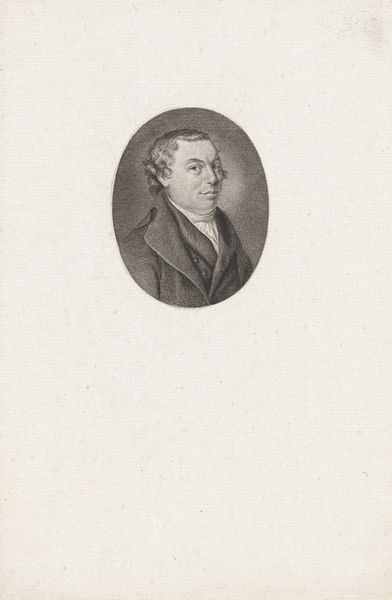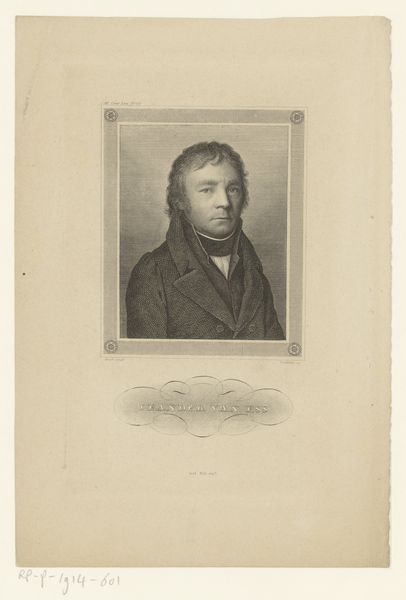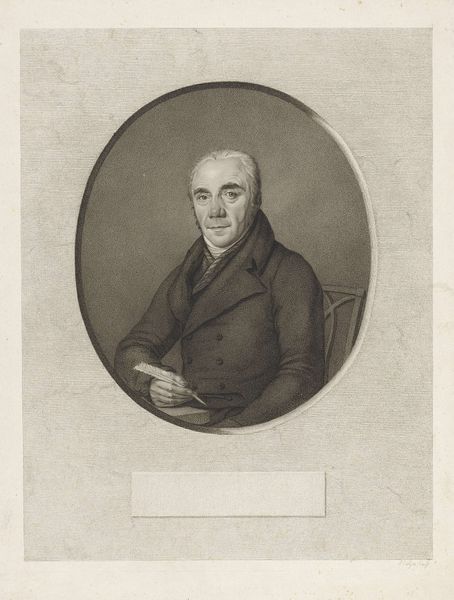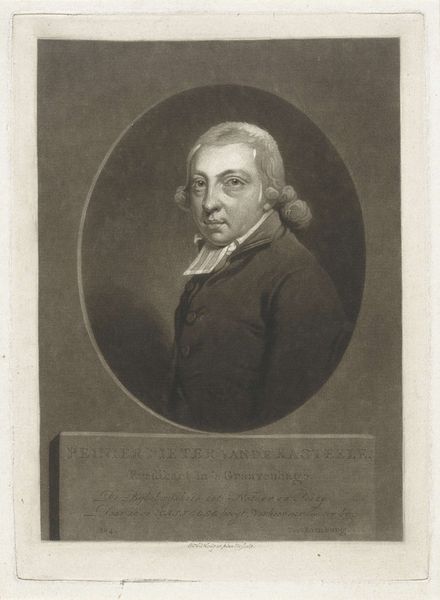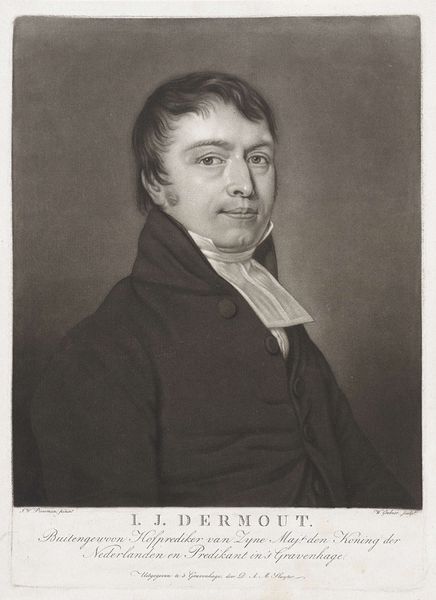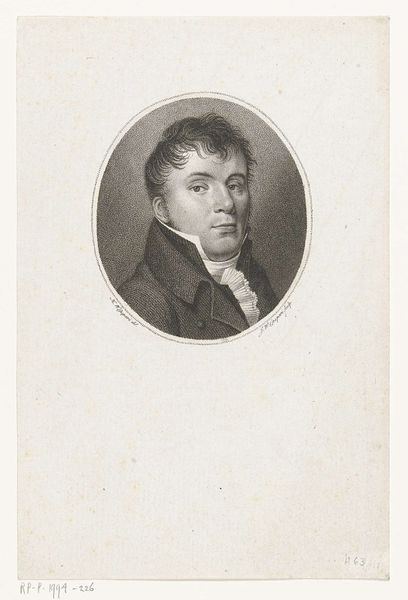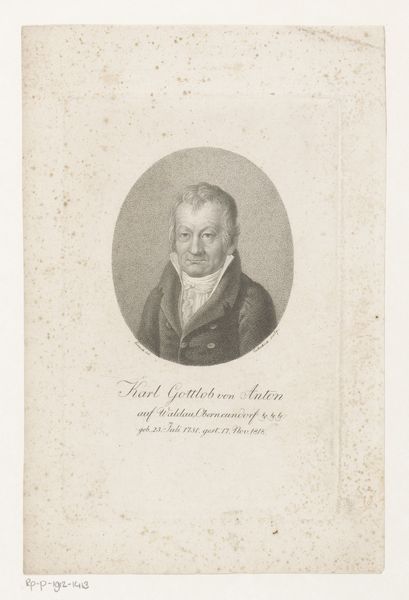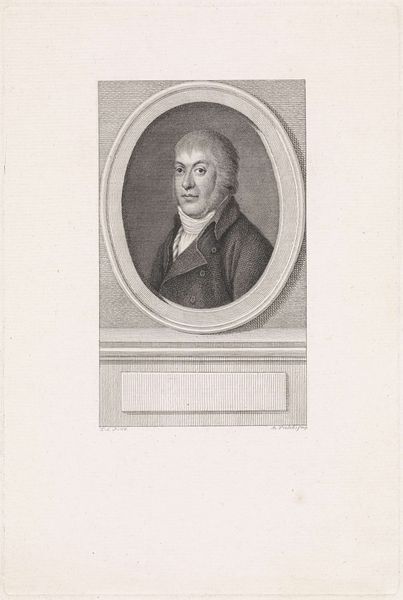
drawing, print, engraving
#
portrait
#
drawing
# print
#
historical photography
#
history-painting
#
engraving
Dimensions: plate: 9 11/16 x 6 5/8 in. (24.6 x 16.8 cm)
Copyright: Public Domain
Editor: Here we have Asher Brown Durand’s "David Hosack, M.D., F.R.S.," an engraving from 1834, now at the Met. I’m immediately struck by the somber tone, yet the man's gaze seems quite direct and thoughtful. What symbols jump out at you in this portrait? Curator: Beyond the explicit markers of status – the book, the classical bust lurking in the background – I see an interesting interplay of scientific and humanistic ideals, wrestling in the cultural memory. Consider how Hosack is portrayed not merely as a doctor, but as a figure steeped in learning, clutching that book almost protectively. What do you think that represents? Editor: I suppose it highlights his intellectual prowess, beyond just medical knowledge? Almost like claiming knowledge protects you? Curator: Precisely. And observe the bust. Whose image do you imagine that is, and why include it at all? Does its stoic gaze reflect or contradict Hosack's? Durand, I think, seeks to connect Hosack to a lineage of enlightened thinkers. We’re not just seeing a likeness but are being reminded of tradition. Does it alter your impression? Editor: Yes, the bust makes it feel like he's striving for a sort of immortality through knowledge. I hadn’t noticed how powerful that layering was. Curator: It's these layers that reveal how art can condense so much cultural weight into a single image. The book, the bust, his very bearing—they speak volumes about the values and aspirations of the time. It allows you a glimpse into the psyche of early 19th century American ideals. Editor: It’s amazing to consider all of the levels of meaning embedded within one portrait. I'll never look at these engravings quite the same way again. Curator: Indeed. Each symbol is like a doorway to understanding a whole era. It is fascinating!
Comments
No comments
Be the first to comment and join the conversation on the ultimate creative platform.
